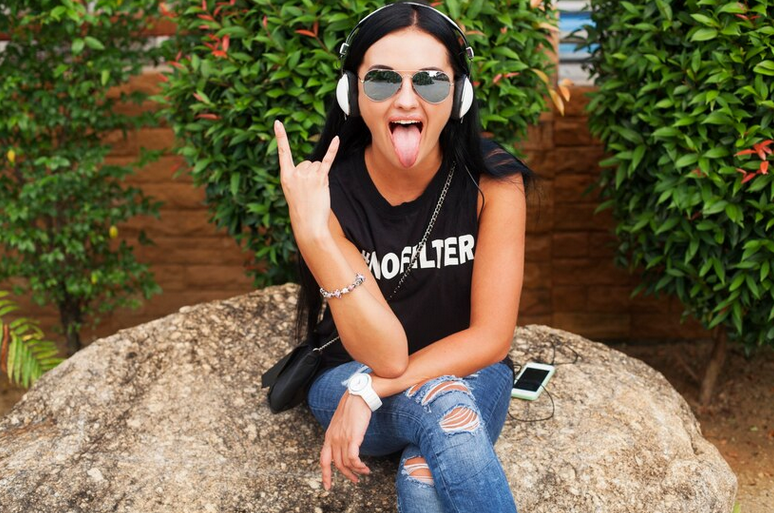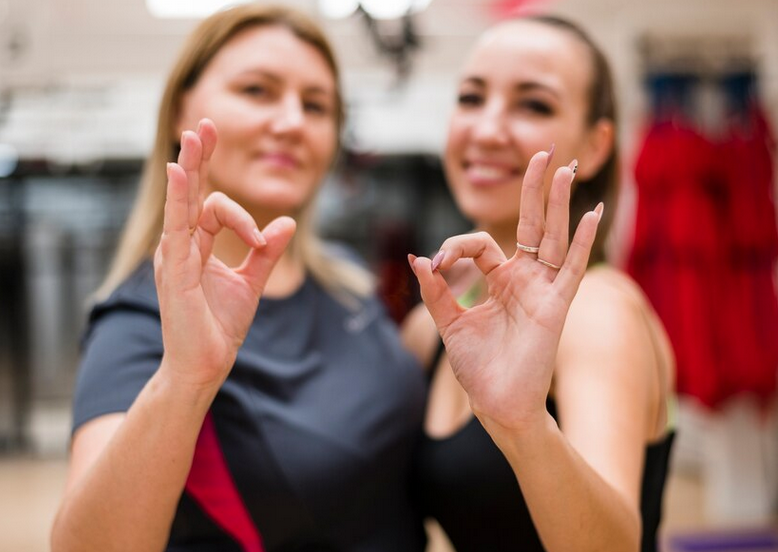How modern online stores implement situational marketing
-
Yulia Portnova
Copywriter Elbuz
Welcome to the world of deceptive opportunities, instant solutions and unique situations. Situational marketing is the art of touching the present, the art of using the moment. In online stores, where every keystroke can change your life, this method becomes an indispensable tool in the hands of great masters. Do you want to know how situational marketing is used in online stores? Hold on tight because I'm going to show you five amazing ways this powerful tool can shake up the ecommerce world. But get ready – situational marketing has the power to change the way you think about business and the magic of the internet. In a world of brevity and surprise, where everyone considers themselves an expert, only true experts will meet the challenges of situational marketing. Get ready for an exciting journey that will reveal to you the secrets of success in online business!

Glossary
Situational Marketing: It is a marketing strategy that relies on using current events or situations to promote products or services.
Online stores: These are electronic platforms where you can buy goods and services online.
Applications: in the context of situational marketing, these are various methods and strategies for using current events in online stores to attract and retain customers.
Situational or situational marketing: It is an approach to marketing based on responding to current events or situations to achieve your marketing goals.
Opportunity Marketing Process: This is the sequence of steps that are taken to implement situational marketing in online stores. Involves identifying opportunities, planning, developing content, and executing marketing activities in response to current events or situations.
Types of situational marketing: these are various approaches or areas of situational marketing, such as social media marketing, electronic mailing, contextual advertising and others.
Situational Marketing Mistakes: These are common mistakes that online retailers make when using situational marketing strategy. For example, out of context content, careless attitude towards current events or situations, etc.
Check yourself again: This is a call for online retailers to carefully evaluate the current situation before using situational marketing, ensure that the content meets the marketing goals and does not cause negative reactions from customers or the public.
Now that we've covered the basic terms associated with situational e-commerce marketing, let's dive into the details of this strategy and how to apply it.
Situational marketing: an effective way to promote in online stores
In the world of modern business, various marketing strategies are actively used to attract the attention of the target audience and increasing sales. One such strategy is situational marketing. In this section, I would like to share my experience and knowledge about the use of situational marketing in online stores.
Situational marketing is the reaction of a company or brand to events in the world that are used to promote products. It is based on personalizing communication with customers depending on their behavior, context and situation. This strategy allows you to make a strong impression on your audience and grab their attention.

The reason for situational marketing can be anything, from the long-awaited premiere of a film to world or Ukrainian events. For example, an online store can use a popular Internet meme or create a prank in connection with some current situation. The main thing is to be able to quickly and competently react to what is happening.
Situational marketing is most often used on social networks, as they are an excellent platform for interacting with the audience. Companies actively use memes, demotivators, funny pictures and jokes that circulate on the Internet. This helps to attract attention and create positive emotions in potential customers.
One of the main benefits of situational marketing is increasing audience awareness and engagement. Customers remember a company or brand better if it is associated with something relevant, funny or emotional. In addition, situational marketing allows a company to promote new products and services, announce sales and promotions.
I want to share one interesting example of using situational marketing in an online store. Recently, our brand was able to effectively apply this strategy during the premiere of a very popular film. We have developed a special promotion where each customer who makes a purchase from our collection will be given an exclusive branded product - a T-shirt with the film’s logo. This allowed us not only to attract new customers, but also to strengthen the loyalty of our existing audience.

To use situational marketing effectively, I recommend considering several important factors. First, keep up with current events and trends that may be of interest to your target audience. Secondly, take note of successful examples of well-known companies and adapt them to your brand. Thirdly, do not forget to focus on the interests and preferences of your audience. Add humor, creativity and originality to your marketing campaigns.
Situational marketing is a powerful tool for promotion in online stores, and its effectiveness has already been proven by many successful cases. When used correctly, it allows you to not only draw attention to your products, but also establish a deeper connection with your audience. If you want to be successful in your online business, I highly recommend mastering this strategy and applying it to your marketing practices.
Conclusions on the use of situational marketing in online stores:
- Situational marketing is a reaction companies to events in the world to promote products.
- Situational marketing allows you to attract attention to products and increase sales.
- Situational marketing is most often used in social networks.
- It is important to follow current events and trends that interest your audience.
- Focus on customer interests and preferences when creating situational marketing campaigns.
Use situational marketing in your online store and you will see positive results. Give your customers the chance to relax and get a little humor with your products. You should definitely try this strategy!

Next, check out our articles:
Which online stores can use situational marketing?
Although situational marketing can be an effective tool for almost any online store, there are certain categories of goods and services where it can be especially effective. Let's look at a few examples to better understand where situational marketing can be most useful.
Online sporting goods store: If you are the owner of an online store specializing in the sale of sporting goods, then situational marketing can become an indispensable tool for you. During major sporting events such as the FIFA World Cup or the Olympics, you can use creative advertising based on the event. For example, you could create a funny image of a soccer ball and write text encouraging customers to support their favorite team and purchase branded merchandise.

Online auto parts store: Another good example is an online auto parts store. During world events that attract a lot of visitors and tourists, you can use situational marketing to attract attention to your store. For example, you can offer special promotions on event stickers, emphasizing that only a working car can fully enjoy the trip.
Online store of household goods, online pharmacy: It is important to consider the topic of the agenda and the interests of your audience. For example, if an important social event occurs, such as raising the retirement age, an online store of household goods or an online pharmacy should pay attention to situational marketing. You may be interested in a grateful audience that will perceive situational advertising in the best possible way. You can offer solutions and products that will help improve the quality of life as you age, and use such points in your advertising.
Ultimately, the key to successfully using situational marketing is to apply it wisely in the context of your target audience and thematic relevance of the event or social trends. It's important to be flexible and creative when using this marketing strategy to give your online store an edge over your competitors and attract more customers.

Thus, the use of situational marketing in online stores can be very effective. This allows you to tailor communication with customers depending on the situation and context. Real examples of the use of situational marketing in online stores can inspire you to master this strategy and give you new ideas for successfully growing your business.
Using situational marketing in online stores: 5 effective strategies
When it comes to effective ways to attract your target audience to online stores, marketers are increasingly turning to situational marketing. This strategy is based on personalizing communication with customers depending on their behavior, context and situation. In this section, I would like to talk about how situational marketing is used in online stores and offer you 5 effective ways to use it.
1. Follow news and news feeds
The first step in using situational marketing in an online store is to keep abreast of the latest news and current news stories. Regularly check news sites and popular social media communities to find out about events that may be of interest to your target audience. For example, if you sell electronics, you should be aware of the release of new models of smartphones or other popular gadgets.
2. Study competitors and successful examples
Look through the websites and public pages of competitors, as well as those companies that show wit and skillfully use situational marketing. Pay attention to the ways they integrate into current events and make it relevant to their audience. Don't just copy their ideas, but give them your own interpretation and approach.

3. Plan and Create Unique Content
Before you launch an ad campaign using situational marketing, sit down and make a little plan. Think about what purpose you are pursuing with this advertising, what you expect from it and what you count on. Answer the question whether you just want to hype up a fashionable topic or are you hoping to sell goods for this shop. In the latter case, the product must be at least slightly related to the topic of the news.
4. Create Engaging and Relevant Content
The key to situational marketing is to create content that grabs users' attention and is relevant to the current event. Call an advertiser, SMM specialist or PR specialist to work with them to create a post, a unique picture or an advertising banner on your website. Think about how you can convey your offer in a sparkling and original way that will capture the attention of your target audience.
5. Measure and Analyze Results
Of course, one important aspect of any marketing strategy is measuring and analyzing results. Carefully track traffic, views, and other metrics of your advertising campaign to understand how successfully you are using situational marketing in your online store. Use this data to optimize and improve your strategy.
Summary
Situational marketing is a powerful tool that can help you improve the effectiveness of your advertising and attract more customers to your online store. But remember that this is not just a magic wand - it requires planning, creativity and detailed analytics. Apply the above methods in your practice and gradually improve your situational marketing skills. Good luck!

Additional articles:
You can come up with a successful joke in ten minutes, or you can plan an advertising campaign in advance - for example, when the release of a new film or sporting event is known many months in advance. Despite this, the process of creating situational advertising usually consists of several stages.
Types of situational marketing: creative ways to use
Situational marketing is a strategy that allows personalize communications with customers based on their behavior, context and situation. In online stores, the use of situational marketing can be an effective tool for attracting and retaining customers. I want to share with you five successful ways I used situational marketing in my online store.
1. Strategy with banners
Banners are advertising blocks on a website that can be used to highlight important events, news or news feeds. For an event to be worth the cost of creating a banner and advertising, it must be global and attract users to the site.
I spent a long time preparing such promotions in advance, paying great attention to detail. For example, associated with large sporting events such as marathons. This allowed us to offer customers relevant products related to this event, as well as reward them with special discounts or gifts.

2. Posts on social networks
Another way to use situational marketing on the Internet stores is the creation of relevant posts on social networks. Such publications allow you to quickly and effectively convey information to customers. I have always tried to keep abreast of all important events and trends in order to offer my subscribers interesting and relevant materials.
In my posts, I actively used creative approaches: I created bright pictures, came up with attractive inscriptions and, most importantly, always connected all this with the assortment of my store. For example, after a big sporting event, I could share feedback from customers who bought gear from me for the event. This helped me attract new clients and strengthen connections with existing ones.
3. Using e-mail newsletters
E-mail newsletters are another way to use situational marketing in online stores. This is a great opportunity to interact with customers by reminding them about discounts, abandoned carts, current products, or simply offering useful or entertaining information.
I have always tried to make such newsletters interesting and useful for clients. For example, I could offer a personalized discount to customers who had not shopped for a long time, or give tips on how to care for certain items they had previously purchased from me. This helped me keep in touch with customers and encourage them to make repeat purchases.
4. Partnerships and cooperation
Another way to use situational marketing in online stores is to establish partnerships and cooperation with other companies. For example, together with my partners from related industries (for example, beauty salons or fitness clubs), we created joint promotions or offered joint discounts.
Such partnerships helped me attract new clients from other industries, as well as offer my clients additional services or products that might be of interest to them. This has also facilitated the maintenance of good relationships with other companies and the exchange of customer bases.

5. Online events and promotions
To actively attract customers and create a positive image of my online store, I organized online events and promotions. For example, she held quizzes with valuable prizes or offered to participate in competitions on social networks.
Such events helped me reach a wider audience, engage potential clients and strengthen connections with existing ones. In addition, it was a good way to introduce customers to the assortment of my store and show the benefits of cooperation with me.
Summary
Situational marketing is a strategy that can significantly improve the performance of an online store. By using different methods, such as using banners, social media posts, email newsletters, partnerships and online events, you can increase the attractiveness and success of your business.
Use situational marketing creatively and meet the needs of your audience. Remember that you need to be alert to changes in the environment and actively attract customers to your product range. Have fun using situational marketing in your online store!
"The goal of marketing is not just to sell more, but to encourage customers to buy again and again" - Philip Kotler, American economist and marketer. Professor of International Marketing at the Kellogg School of Management, Northwestern University. Author of more than 80 books on classical marketing and management.
Ways to use situational marketing in online stores
In the world of modern Internet marketing, every day it becomes more and more difficult to win the attention of customers and keep them on your website. To stand out from competitors and attract more visitors, many online stores are turning to situational marketing. In this article I will tell you what situational marketing is and how it can be used in online stores.
1. Discounts and promotions dedicated to news events
One of the most common and effective ways to use situational marketing in online stores are discounts and promotions dedicated to news feeds. News events are events that attract a lot of public attention, such as holidays or major sporting events.
For example, an online store of cosmetics and perfumes may announce a sale on the eve of the Eighth of March, and a store selling baked goods and confectionery products - before Easter. Such promotions attract customers because they see them as benefits and an opportunity to save money. In addition, they create an emotional connection with the customer and allow you to use real-life events to attract attention to the product or service.

2. Connecting news or events with your product range
Another way to use situational marketing in online stores - connect news or events with your range of goods or services. For example, if the World Cup is taking place, many online stores are already using this information occasion in marketing.
You can play on an advertising slogan or phrase that is relevant during the event and associate it with your products or services. For example, if you sell soccer balls, you can come up with a household situation where a soccer ball is an important element and advertise its arrival or successfully promote products that are already in stock.
3. Entertaining content
Entertaining content is also one of the ways to use situational marketing. This could be a picture or a meme designed to draw attention to a specific product or service. Entertaining content should be easy to understand and make customers smile or laugh.
For example, you can create a funny picture of your product and a caption that will attract customers' attention and make them think about purchasing. Such content also often goes viral and is shared on social networks, which helps attract new customers.

Summary
Situational marketing is a strategy that allows online stores to retain customer attention and attract new customers. By using discounts and promotions timed to coincide with news events, linking news or events with an assortment of products and entertainment content, you can create unique and attractive marketing material.
Situational marketing is a powerful tool up the sleeve of every online store. Use it wisely and get inspired by new ideas for applying this strategy. Don’t forget to stay on top of fashion trends and respond instantly to customer interest. This will help you maintain attention and get the most out of situational marketing.
Risks and pitfalls in situational marketing
When it comes to situational marketing, nothing is more important than choosing the right themes and images for your advertising.
My conclusion is that you need to be extremely careful and careful when choosing images for advertising. Always remember to match the pictures and ideas of your business. If you notice any discrepancies between your brand image and values, it is best to refrain from using such advertising and wait for an opportunity to present your product or service in a more thematic and relevant manner.

The risk of slipping into vulgarity is another trap that you can fall into with situational marketing. Of course, it's tempting to use hot topics and nude charms to attract new visitors. However, research shows that interest in such advertising quickly disappears, and the perception of it as insufficiently serious and cheap has a negative impact on customers’ desire to buy goods.
My conclusion is that hype can be achieved by coming up with something more intelligent and ironic than just naked charms. Uniqueness and sharpness of thought will help you attract the attention of customers and allow you to remain in the advertising memory for longer.
Situational marketing can be very effective, but there are some topics that are off limits for jokes. This includes people's religious beliefs, health, appearance, nationality, as well as death and human tragedies. Be careful to avoid any topics that may offend or incite intolerance in the audience. The golden rule of situational marketing is respect for each client and his personal preferences.
Thus, to avoid mistakes and risks in situational marketing, you should carefully select sources of inspiration and images, keep the values of your business and audience in mind, and do not forget that funny and ironic can be much more more effective than vulgarity and cheap tricks.
There are many variations and opportunities for situational marketing. However, the success of this strategy depends on our ability to choose the right images, themes and approaches for our specific audiences. Caution and creativity are the keys to using situational marketing effectively. Be aware of the risks and pitfalls, be intelligent and wry, and your advertising campaigns will attract attention and produce results.
Overview table
| What to do | What to avoid |
|---|---|
| Select pictures , consistent with the business idea | Use pictures that contradict the brand values |
| Come up with intellectual and ironic concepts | Use vulgar and frivolous techniques |
| Respect the feelings and preferences of the audience | Jokes about taboo topics |

Thus, situational marketing in online stores can be a powerful tool, but requires a careful and competent approach. Choose themes and images that align with your audience and brand values, and be mindful of off-limits topics. Intelligence, creativity and respect for customers are the keys to successfully using situational marketing in online stores.
Remember that your goal is to attract customers and increase sales, while remaining respectful and professional. Use situational marketing wisely in your online stores and you will see positive results.
💁 My recommendations for situational marketing in online stores
My personal experience in the field situational marketing
I have been working in the field of online stores for several years and want to share my experience and knowledge about situational marketing. This strategy is based on personalizing communication with customers, as well as taking into account their behavior, context and situation. In my practice, situational marketing has proven to be a very effective tool for increasing sales and improving relationships with clients. In this section, I want to present to you 5 ways to use situational marketing in online stores, which I was able to test in practice.
Using situational marketing in online stores
1. Personalized email newsletter
One of the most effective ways to use situational marketing marketing is a personalized email newsletter. We all know that clients have different interests and needs, so it is important to treat each client individually. I implemented this strategy in my online store and the difference in customer response was amazing. By analyzing data about customers and their behavior, I sent them personalized emails with recommendations for products or services that interested them. The results showed that customers who received such emails made more purchases and returned to the site more often.

2. Dynamic discounts and promotions
Another way to use situational marketing is to use dynamic discounts and promotions. In my online store, I conducted several studies that showed that customers react differently to different types of discounts. For example, some customers prefer percentage discounts, while others pay more attention to fixed discount amounts. Using information about customer preferences and purchases, I created personalized dynamic discounts and promotions. This allowed us to attract more customers and encourage them to make purchases.
3. Advertising campaigns on social networks
Social networks are an excellent platform for situational marketing. In my practice, I used geolocation and contextual advertising on social networks. For example, if a client was near our store, he would be shown an advertisement with current offers and discounts. Also, taking into account the interests of clients, I carried out targeted advertising to show them relevant ads. This approach allowed us to increase the influx of customers and increase conversion from advertising campaigns.
4. Content marketing and blogging
To use situational marketing in online stores, it is necessary not only to sell products, but also to provide valuable information. Creating a blog and content marketing materials allows you to share useful tips and information with your customers. I created a blog for my online store, where I regularly published articles about fashion trends and modern ways of using products. In addition, I also talked about new arrivals and promotions. This helped establish more trusting relationships with clients and attract new audiences.

5. Reviews and ratings
Reviews and ratings of products are a powerful tool for situational marketing. It is important not only to receive feedback from customers, but also to use it in promoting products. I created a section on my website with reviews and ratings, and also actively discussed products on social networks. This allowed customers to share their opinions on products and influence the decisions of other customers. In addition, thanks to reviews and ratings, I could more effectively advertise the best products, increasing their demand and sales.
Conclusion
Situational marketing is a powerful tool that can significantly improve the results of an online store. By personalizing communication with customers, using dynamic discounts and promotions, advertising campaigns on social networks, content marketing and reviews, you can attract more customers and increase their loyalty. I hope my recommendations will help you successfully apply situational marketing to your online store. Good luck with your promotion!
Ask yourself the right questions to apply situational marketing to your business. Keep in mind the goals and mission of your business, as well as how your target audience feels about your advertising. You're in the right direction if your advertising drives profit and establishes you as a creative company. Assess your need for widespread popularity and whether it is enough for you to be known among your target audience. Experiment, try and create - and the audience will definitely notice your efforts.

Frequently asked questions on the topic: How modern Internet Are stores introducing situational marketing?
1. What is situational marketing?
Situational marketing is a marketing strategy based on the use of current events or situations to promote goods or services.
2. How can online stores use situational marketing?
Online retailers can use situational marketing, responding to current events, holidays, seasons or trends to attract the attention of their audience and increase sales.
3. What is the process of situational marketing?
The process of situational marketing involves observing current events, analyzing their relevance to the business, creating relevant content and distributing it to attract customers.
4. What types of situational marketing are there?
There are various types of situational marketing, including responding to holidays, sporting events, news, social media trends and other situations that may be related to business .
5. What methods can be used to apply situational marketing?
Situational marketing can be used by creating thematic content, holding promotions or discounts related to current events, using relevant hashtags on social networks and participating in discussions on forums .
6. What mistakes should be avoided in situational marketing?
Errors in situational marketing can include inappropriate context, inconsistency with brand values, misinterpretation of events, or ill-conceived actions that can cause a negative reaction from the audience.
7. How can you test the effectiveness of situational marketing?
To test the effectiveness of situational marketing, you can use analytics tools to track traffic, conversions, increased sales, and audience response to situational marketing promotions.
8. How can you avoid unwanted reactions in situational marketing?
To avoid undesirable reactions in situational marketing, you should carefully analyze the context of events, take into account the opinions and sentiments of the audience, be attentive to the smallest details and have an understanding of brand values .
9. What examples of situational marketing in online stores can you point out?
Examples of situational marketing in online stores include creating special offers and discounts for the holidays, developing thematic content according to current events or trends, and using relevant hashtags on social networks.
10. Are there any risks in using situational marketing for online stores?
Yes, there are risks in using situational marketing for online stores, such as undesirable audience reactions, inconsistency with brand values, misinterpretation of events or unintended consequences of promotions related to situational marketing.
Thanks for reading the article and becoming a wiser reader! 😊
Situational marketing is the secret weapon of online stores that makes you a real sales guru! You learned how to use this strategy and got five ways to use it. Now you are ready to conquer online business and become a successful entrepreneur.
Do not forget that each situation requires an individual approach. Adapt your marketing strategy to changes in the external environment and the desires of your audience. Be flexible and creative to stand out from your competitors.
I hope my article helped you understand how to use situational marketing to increase sales and attract customers. I look forward to your comments on what you think about this strategy and what results you were able to achieve. Ask questions, share your successes and together we can achieve even greater heights in online business!

- Glossary
- Situational marketing: an effective way to promote in online stores
- Which online stores can use situational marketing?
- Using situational marketing in online stores: 5 effective strategies
- Types of situational marketing: creative ways to use
- Ways to use situational marketing in online stores
- Risks and pitfalls in situational marketing
- My recommendations for situational marketing in online stores
- Frequently asked questions on the topic: How modern Internet Are stores introducing situational marketing?
- Thanks for reading the article and becoming a wiser reader!
Article Target
Informing readers about the use of situational marketing in online stores: a guide to mastering this strategy.
Target audience
Marketing managers, online store owners, e-commerce specialists.
Hashtags
Save a link to this article
Yulia Portnova
Copywriter ElbuzWords are my tool in creating a symphony of online store automation. Welcome to my literary cosmos, where every idea is a star on the path to a successful online business!
Discussion of the topic – How modern online stores implement situational marketing
Informing about what situational marketing is, how it is used in online stores: 5 ways to use it.
Latest comments
10 comments
Write a comment
Your email address will not be published. Required fields are checked *














.jpg)










John Smith
Situational marketing is a strategy in which a company uses current events and trends to promote its product or service. In online stores, it can be used to attract attention to new products or special promotions. Which of the five ways to use situational marketing is most interesting to you?
Anna Müller
I love the idea of using situational marketing for the holidays. Every holiday can be turned into an opportunity to offer special discounts or promotions on certain products. For example, during an online store’s birthday, you can give gifts or offer special discounts on products on the customer’s birthday.
Julia Portnova
Great idea, Anna! You are right to note that situational marketing can be very effective during the holidays. Users pay great attention to such events and are ready to make purchases under the impression of the festive atmosphere. Anyone else want to share their experience using situational marketing in online stores?
Luis García
I use situational marketing to attract attention to my online store through social media. When some important event or news happens in the world, I make posts in which I associate this event with my products. For example, if there is a concert of a popular artist, I can make a post advertising my headphones and write: “Listen to your favorite artist with our quality headphones!” This helps me reach a wider audience.
Olga Nowak
Great idea, Luis! Using current events to attract users' attention is one of the advantages of situational marketing. Has anyone else tried other methods of use?
Marco Rossi
I tried adding personal cases to my newsletters. For example, I told the story of one of the clients who used my product and achieved success. This helped me establish a stronger connection with my audience and make my newsletter more interesting and useful.
Юлия Портнова
Marco, this is a great way! Personal stories always attract attention and create an emotional connection between the client and the brand. Has anyone tried anything else?
Konrad Kowalski
I used situational marketing for seasonal promotions. For example, during a summer sale, I created a special landing page where I offered a discount on products that are in demand during the summer. This helped me increase sales and attract new clients.
Maria López
Great idea, Konrad! Situational marketing for seasonal promotions allows you to show the user relevant offers and create urgency in the purchase. I also like to use situational marketing for important industry news. When something important happens in the industry, I share my opinion and offer my products or services as a solution.
Grumpy Oldman
All these trends and situational marketing are nonsense. People buy what they need, not what is advertised as current. I don't believe in these newfangled marketing tricks. It's better to focus on the quality of products and service rather than marketing gimmicks.